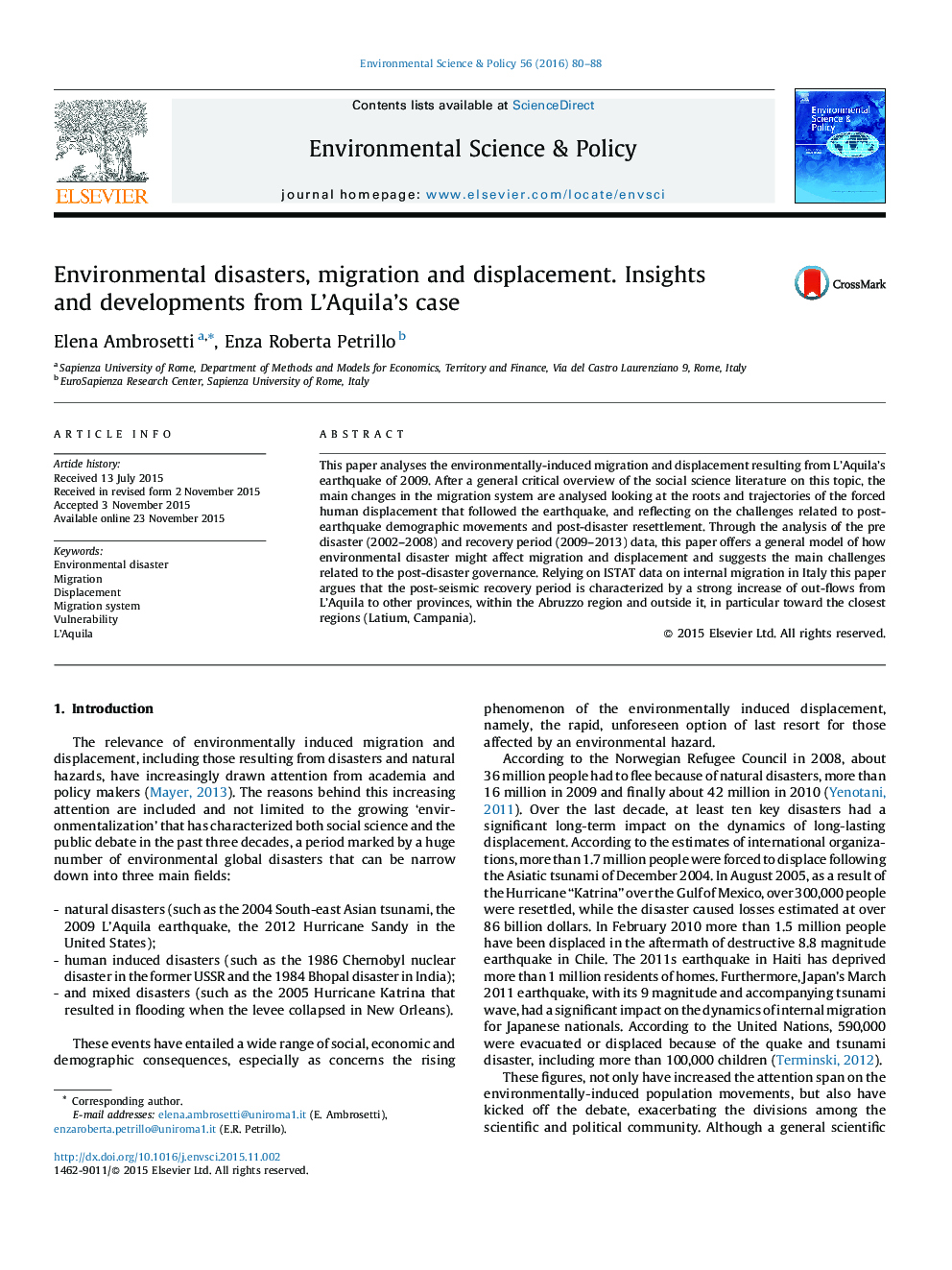| Article ID | Journal | Published Year | Pages | File Type |
|---|---|---|---|---|
| 7467104 | Environmental Science & Policy | 2016 | 9 Pages |
Abstract
This paper analyses the environmentally-induced migration and displacement resulting from L'Aquila's earthquake of 2009. After a general critical overview of the social science literature on this topic, the main changes in the migration system are analysed looking at the roots and trajectories of the forced human displacement that followed the earthquake, and reflecting on the challenges related to post-earthquake demographic movements and post-disaster resettlement. Through the analysis of the pre disaster (2002-2008) and recovery period (2009-2013) data, this paper offers a general model of how environmental disaster might affect migration and displacement and suggests the main challenges related to the post-disaster governance. Relying on ISTAT data on internal migration in Italy this paper argues that the post-seismic recovery period is characterized by a strong increase of out-flows from L'Aquila to other provinces, within the Abruzzo region and outside it, in particular toward the closest regions (Latium, Campania).
Related Topics
Physical Sciences and Engineering
Energy
Renewable Energy, Sustainability and the Environment
Authors
Elena Ambrosetti, Enza Roberta Petrillo,
